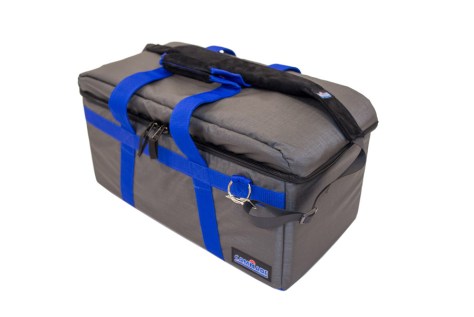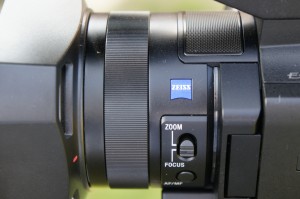This is a question that gets asked a lot. And if you are thinking about buying a new camera it has to be one the you need to think about. But in reality I don’t think 8K is a concern for most of us.
I recently had a conversation with a representative of a well known TV manufacturer. We discussed 8K and 8K TV’s. An interesting conclusion to the conversation was that this particular TV manufacturer wasn’t really expecting their to be a lot of 8K content anytime soon. The reason for selling 8K TV’s is the obvious one – In the consumers eyes. 8K is a bigger number than 4K, so it must mean that it is better. It’s any easy sell for the TV manufacturers, even though it’s arguable that most viewers will never be able to tell the difference between an 8K TV and a 4K one (lets face it most struggle to tell the difference between 4K and HD).
Instead of expecting 8K content this particular TV manufacturer will be focussing on high quality internal upscaling of 4K content to deliver an enhanced viewing experience.
It’s also been shown time and time again that contrast and Dynamic Range trump resolution for most viewers. This was one of the key reasons why it took a very long time for electronic film production to really get to the point where it could match film. A big part of the increase in DR for video cameras came from the move from the traditional 2/3″ video sensor to much bigger super 35mm sensors with bigger pixels. Big pixels are one of the keys to good dynamic range and the laws of physics that govern this are not likely to change any time soon.
This is part of the reason why Arri have stuck with the same sensor for so long. They know that reducing the pixel size to fit more into the same space will make it hard to maintain the excellent DR their cameras are known for. This is in part why Arri have chosen to increase the sensor size by combining sensors. It’s at least in part why Red and Sony have chosen to increase the size of their sensors beyond super 35mm as they increase resolution. The pixels on the Venice sensor are around the same size as most 4K s35 cameras. 6K was chosen as the maximum resolution because that allows this same pixel size to be used, no DR compromise, but it necessitates a full frame sensor and the use of high quality full frame lenses.
So, if we want 8K with great DR it forces us to use ever bigger sensors. Yes, you will get a super shallow DoF and this may be seen as an advantage for some productions. But what’s the point of a move to higher and higher resolutions if more and more of the image is out of focus due to a very shallow DoF? Getting good, pin sharp focus with ever bigger sensors is going to be a challenge unless we also dramatically increase light levels. This goes against the modern trend for lower illumination levels. Only last week I was shooting a short film with a Venice and it was a struggle to balance the amount of the subject that was in focus with light levels, especially at longer focal lengths. I don’t like shots of people where one eye is in focus but the other clearly not, it looks odd, which eye should you choose as the in-focus eye?
And what about real world textures? How many of the things that we shoot really contain details and textures beyond 4K? And do we really want to see every pore, wrinkle and blemish on our actors faces or sets? too much resolution on a big screen creates a form of hyper reality. We start to see things we would never ever normally see as the image and the textures become magnified and expanded. this might be great for a science documentary but is distracting for a romantic drama.
If resolution really, really was king then every town would have an IMAX theater and we would all be shooting IMAX.
Before 8K becomes normal and mainstream I believe HDR will be the next step. Consumers can see the benefits of HDR much more readily than 8K. Right now 4K is not really the norm, HD is. There is a large amount of 4K acquisition, but it’s not mainstream. The amount of HDR content being produced is still small. So first we need to see 4K become normal. When we get to the point that whenever a client rings the automatic assumption is that it’s a 4K shoot, so we won’t even bother to ask, that’s when we can consider 4K to be normal, but that’s not the case for most of us just yet. Following on from that the next step (IMHO) will be where for every project the final output will be 4K HDR. I see that as being at least a couple of years away yet.
After all that, then we might see a push for more 8K. At some point in the not too distant future 8K TV’s will be no more expensive than 4K ones. But I also believe that in-TV upscaling will be normal and possibly the preferred mode due to bandwidth restrictions. less compressed 4K upscaled to 8K may well look just as good if not better than an 8K signal that needs more compression.
8K may not become “normal” for a very long time. We have been able to easily shoot 4K for 6 years or more, but it’s only just becoming normal and Arri still have a tremendous following that choose to shoot at less than 4K for artistic reasons. The majority of Cinemas with their big screens are still only 2K, but audiences rarely complain of a lack of resolution. More and more content is being viewed on small phone or tablet screens where 4K is often wasted. It’s a story of diminishing returns, HD to 4K is a much bigger visual step than 4K to 8K and we still have to factor in how we maintain great DR.
So for the next few years at least, for the majority of us, I don’t believe 8K is actually desirable. many struggle with 4K workflows and the extra data and processing power needed compared to HD. An 8K frame is 4 times the size of a 4K frame. Some will argue that shooting in 8K has many benefits. This can be true if you main goal is resolution but in reality it’s only really very post production intensive projects where extensive re-framing, re-touching etc is needed that will benefit from shooting in 8K right now. It’s hard to get accurate numbers, but the majority of Hollywood movies still use a 2K digital intermediate and only around 20% of cinemas can actually project at more than 2K.
So in conclusion, in my humble opinion at least. 8K is more about the sales pitch than actual practical use and application. So people will use it – just because they can and it sounds impressive. But for most of us right now it simply isn’t necessary and it may well be a step too far.












 Sony have just released a rather exciting looking new type of mini-cam, the RX0.
Sony have just released a rather exciting looking new type of mini-cam, the RX0. I’ve been using Camrade bags for years. They are tough, protect my gear well without being heavy and clunky like pelicases and other hard shell cases. In addition they don’t scream “expensive equipment here”. They just look like large holdalls. One of the best features is the use of dividers, pads and inserts that are attached with velcro that allow you to reconfigure the bags for different applications.
I’ve been using Camrade bags for years. They are tough, protect my gear well without being heavy and clunky like pelicases and other hard shell cases. In addition they don’t scream “expensive equipment here”. They just look like large holdalls. One of the best features is the use of dividers, pads and inserts that are attached with velcro that allow you to reconfigure the bags for different applications.











 Sony have released firmware update version 4.0 for the PXW-FS7. This new firmware brings some welcome updates to the FS7 including the ability to move the focus magnification area away from the center of the screen. Other new features include true 24p (as well as 23.98fps).
Sony have released firmware update version 4.0 for the PXW-FS7. This new firmware brings some welcome updates to the FS7 including the ability to move the focus magnification area away from the center of the screen. Other new features include true 24p (as well as 23.98fps).










